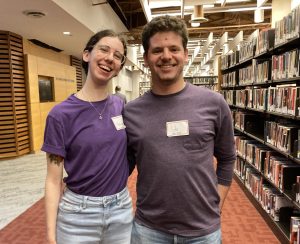For nearly four decades, Israeli filmmaker Amos Gitai has been celebrated internationally by cinephiles while provoking controversy in his native country. His documentaries and fiction films have both looked at the stalled peace process and Palestinian-Israeli relations.
Outside of the film festival circuit, Gitai’s work rarely screens in North America, so Toronto audiences should make it a priority to head to the Hot Docs Ted Rogers Cinema, where his newest film, West of the Jordan River, will play for one week, beginning March 9.
Armed with a small crew, the director traverses borders in Israel and the Palestinian territories to meet with many citizens: journalists, activists, Knesset members, victims of terrorism.
READ: A LOOK AT THE LIVES OF THREE PALESTINIAN WOMEN IN TEL AVIV
The film also marks his first visit to the West Bank since making Field Diary in 1982. The partial censorship of that doc, shot during the Lebanon War, convinced Gitai to move to France.
However, he returned to Israel during Yitzhak Rabin’s tenure as prime minister. In West of the Jordan River, we see clips of Gitai interviewing Rabin shortly before he was assassinated.
As the director says to the audience in archival footage from the mid-1990s, “I want to scratch layer after layer to get to the substance of the matter, to understand how we could possibly reach some reconciliation in the region.”
Accordingly, Gitai is interested in excavating similar answers from 2016, when this doc was made. Many of the sentiments he finds in the modern Middle East echo the mood from two decades earlier, although the director also finds sharply hostile tones – on both sides.
The clearest distinction between the eras comes when one compares Gitai’s interview with Rabin to a more contemporary one with Tzipi Hotovely, Israel’s deputy minister of foreign affairs.
The former calmly speaks of a will among certain Palestinian leaders to negotiate peace, while mentioning that other camps of resistance are too focused on violence. “But peace can be made with enemies,” Rabin insists, “sometimes even the toughest enemies.”
Hotovely, meanwhile, warns that “there’s only radicalization” in Palestinian society.
Gitai’s fascination with potential reconciliation is at its most palpable during scenes with non-violent activists, both Israeli and Palestinian.
One of those groups, Parents Circle Families Forum, is comprised of women from both sides who lost their children in the conflict but meet to partake in dialogue. (This initiative was one focus of the outstanding 2006 documentary Encounter Point.)
Another effort, B’Tselem, is made up of young women clutching video cameras as they try to capture instances of brutality and human rights violations in the West Bank.
At a meeting with these amateur filmmakers, Gitai watches with fascination as the women discuss filmmaking strategies. One of their tactics: using the zoom to keep themselves at a safe distance from aggression.
Audiences should be aware that Gitai is not out to make a film that pleases all sides of the political spectrum. He is quick to challenge right-wing politicians he interviews, and often finds common ground with left-wing journalists – several of whom write for Israel’s Haaretz newspaper.
He even accompanies that publication’s team of journalists into Hebron as they report on Palestinian affairs and non-Israeli points of view.
West of the Jordan River is explicitly left-leaning, although that does not overly hinder the value and urgency of its subject. Even though the film clocks in at under 90 minutes, Gitai manages to cover a wide number of major issues inciting discussion in the Middle East today.
Regardless, the film’s brevity is also a problem. Considering the number of subjects who speak about West Bank settlements, one wishes Gitai had spent more time meeting with citizens directly affected by these issues. (There is one terrific sequence, though, set at a Bedouin school in the shadow of an Israeli settlement.)
However, the directness of Gitai’s questions and the attention he gives to non-violent activists – groups whose aims are too rarely articulated onscreen – makes the documentary a must-see.






